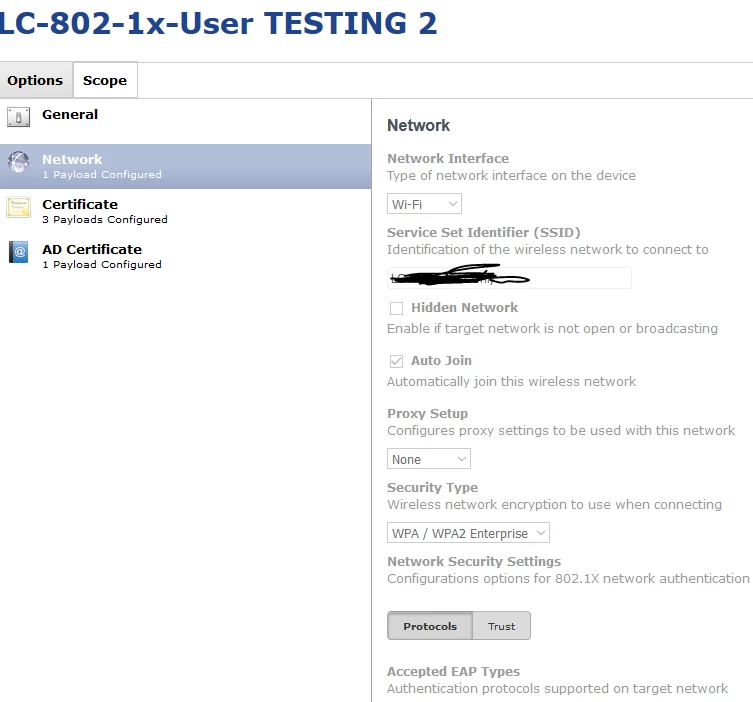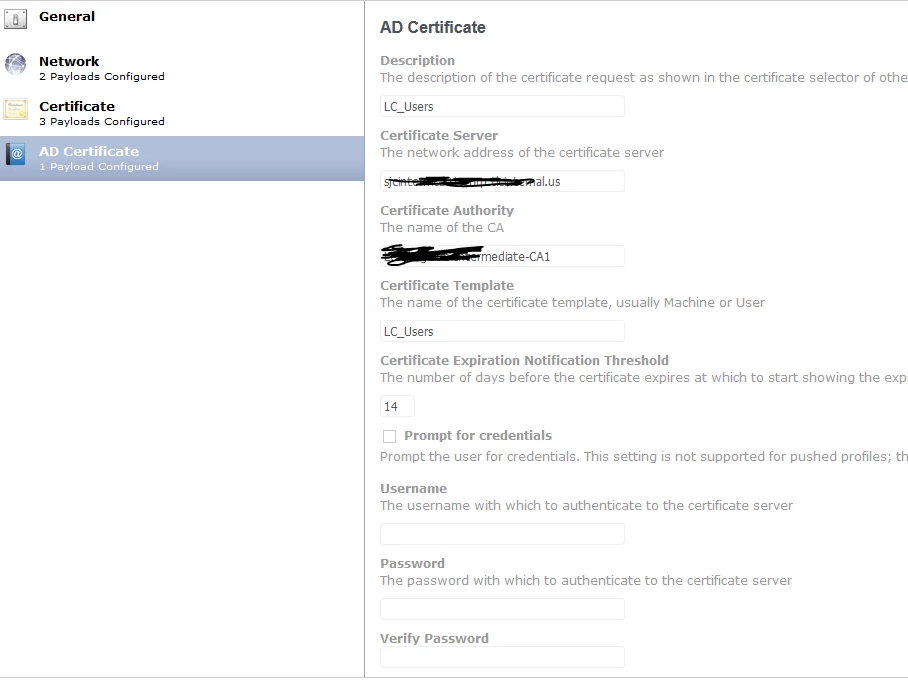Our current environment has a config profile scoped to all machines to setup an AD cert and configure wifi using the AD cert. We've migrated to a new CA server and need to reconfigure this. I've tried updating the existing profile, but upon updating, a majority of machines fail over wifi since it tries to remove the profile(kicks them off wifi) before applying the new settings. Wired connection appears to be fine.
I found that I can cache the .mobileconfig file of the new settings on their computer and run profiles -I -F xxxx.mobileconfig and the user will only see a few seconds of downtime.
The only problem with this is that the existing config profile will still remain. Is there a way I can decommission the profile without affecting the users?






